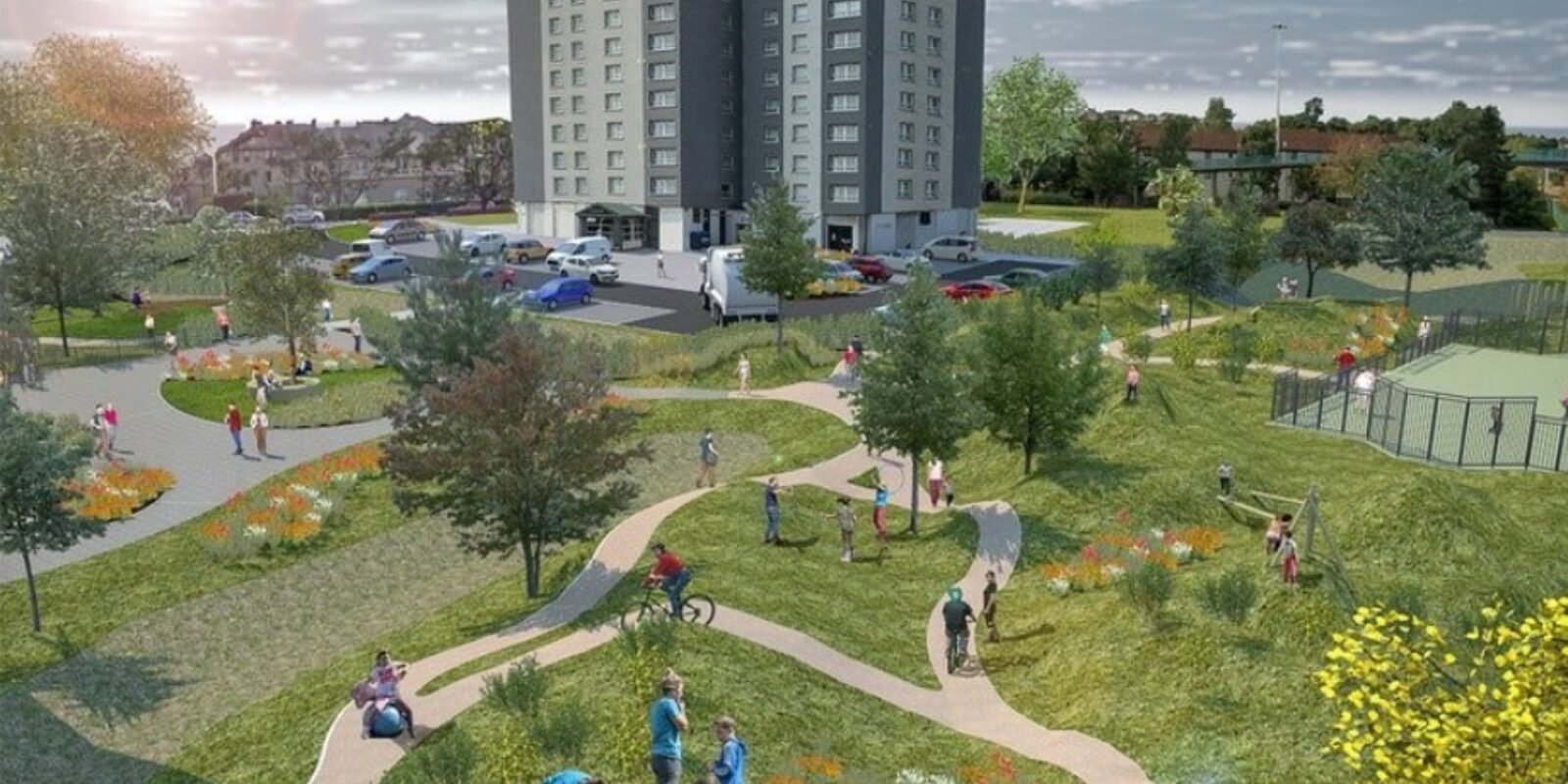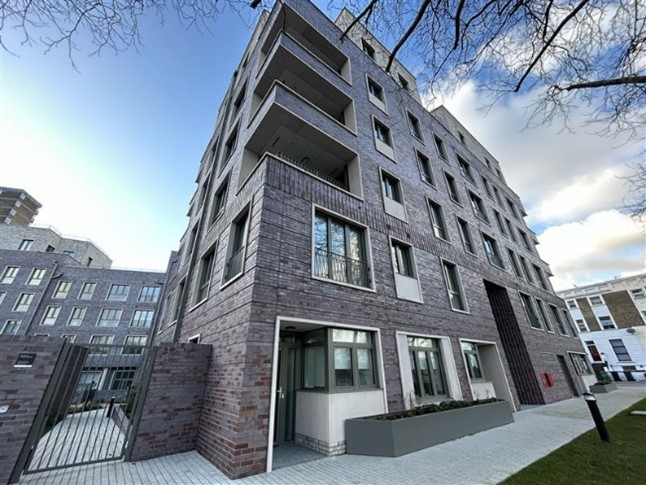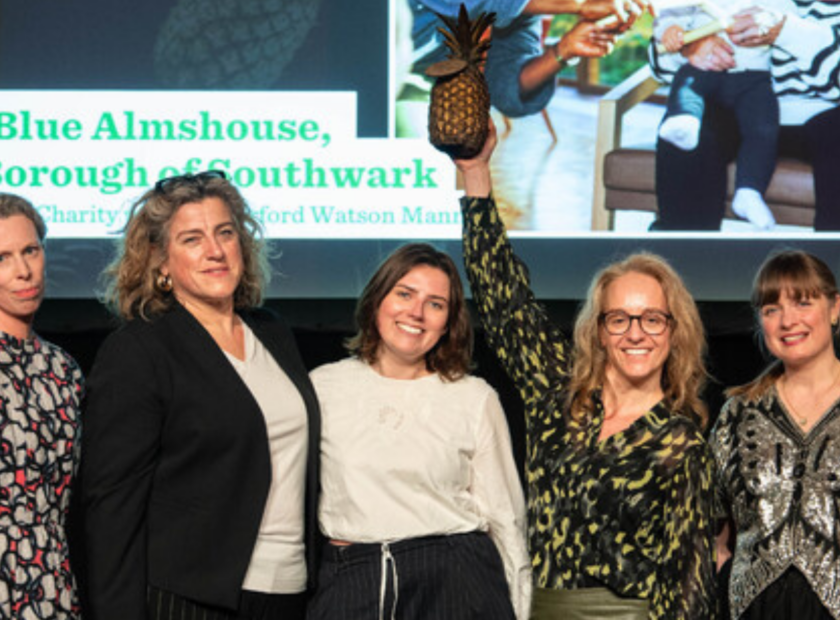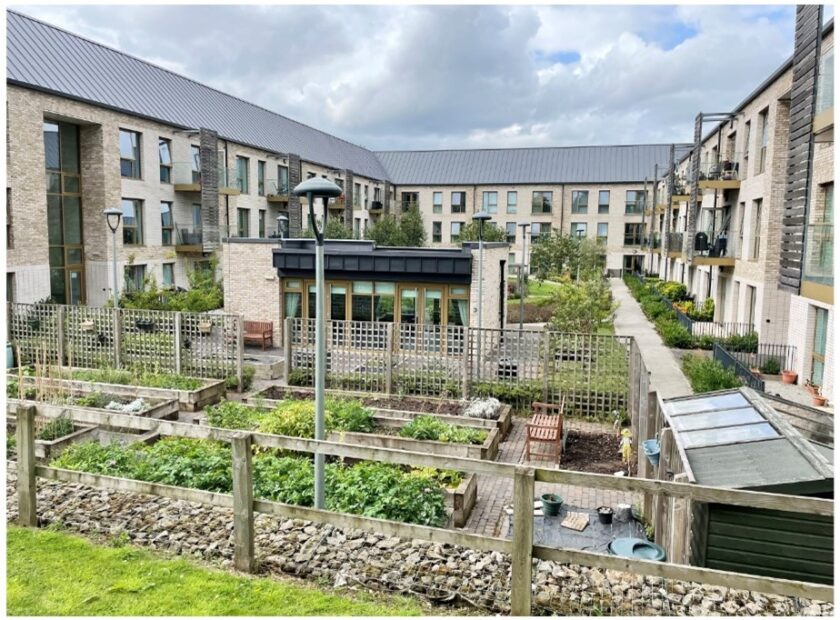To ensure better and more inclusive health outcomes, the TCPA has identified 12 Healthy Homes principles that all new housing developments must provide. Each month, this blog series explores one of the principles
Healthy Homes principle: Access to local amenities, nature and transport
Our ability to live healthy lives is deeply connected to where we live—our homes and the places that surround and connect them. However, in the UK, a staggering 500,000 children live more than ten minutes from a green space, park, or playground, significantly impacting their physical and mental health (TCPA, 2024).
Overall, physical inactivity is responsible for one in six deaths in the UK and costs the NHS up to £1 billion annually (TCPA, 2021). It is crucial that all homes have access to essential services, nature, and active travel options, as these factors play an essential role in shaping our physical, mental, and social wellbeing, and support planetary health (TCPA, 2021).

Image: Flats with accessible and permeable paving surrounded by green infrastructure, Bristol City. Credit: Rosalie Callway
Access to nature matters
Experiencing nature is essential for our mental and physical health. Studies show that people who live close to green spaces experience improved wellbeing, reduced anxiety, and increased happiness (Mental Health Foundation, 2021). Access to natural environments is also linked to increased physical activity (Natural England, 2022).
Living close to green spaces improves wellbeing, reduces anxiety, and increases happiness.
However, the disparity in access is stark. Over a third (38%) of people in England do not live within a 15-minute walk to a park or green space. England’s wealthiest neighbourhoods have five times the amount of green space compared to those in more deprived areas. Many people, including women, younger adults, and ethnic minorities, can also feel unsafe in certain natural spaces, due to fears about harassment or discrimination (Mental Health Foundation, 2021).
During the Covid-19 pandemic, nearly three quarters of UK adults said connecting with nature was vital for their mental health (Mental Health Foundation, 2021). To ensure everyone can experience the benefits of spending time in nature, parks and other green spaces must be made more inclusive, safer, and accessible to all.
England’s wealthiest neighbourhoods have five times the amount of green space than those in more deprived areas.
Movement and transport for better health
The way individuals move around where they live and work affects health in many ways. Areas that lack active travel options, including buses, trains, and trams, as well as walking, cycling and wheeling routes, harm people’s mental health and increases the risk of preventable diseases, like Type 2 diabetes, cardiovascular disease, and musculoskeletal disorders (TCPA, 2024). Encouraging people to move more, by providing safe, inclusive, and accessible streets, also relieves pressure on the healthcare system; regular use of parks and green spaces is estimated to save the NHS £111 million per year (TCPA, 2021).
Designing streets to prioritise active travel brings significant health benefits and makes healthier choices more attractive. If every person in England walked, wheeled or cycled an extra 30 minutes a week, over 6,000 deaths per year could be prevented (Health Foundation, 2021). Despite such clear positives, funding for active travel remains disproportionately low. While the UK government spends heavily on major roads, local councils struggle with a £4 billion spending gap to support improvements that target active travel (Local Government Association, 2023).
Regular use of parks and green spaces is estimated to save the NHS £111 million per year.
New communities must be designed in a way that encourages people to stay socially connected, with easy access to work and school and key amenities like the GP and local shops. Reliable, affordable, and well-connected transport options improve life satisfaction and reduce stress. Promoting alternatives to car travel can help tackle air pollution and reduce harmful emissions linked to respiratory and cardiovascular diseases (Health Foundation, 2021).
Access to amenities, nature and transport in permitted development housing
Developers that convert buildings from non-residential to residential use via permitted development rights (PDR) are not required to contribute to local services through Section 106 Agreements. Many PDR converted buildings are found in isolated industrial estates, lacking access to amenities, or set in the middle of car parks (TCPA, 2023).

Image: Enterprise House, an office to residential PDR conversion in Merton. Credit: Rob Clayton
The unplanned conversion of high street shops into housing through PDR raises concerns about local economic impacts and effective placemaking (TCPA, 2021), risking exacerbating the decline of key commercial areas (TCPA, 2024).
Case studies
Local Plan Policy: Brighton & Hove City Council – DM33: Safe, Sustainable and Active Travel
Brighton and Hove’s local plan aims to prioritise walking, cycling, and public transport. The policy supports their Local Transport Plan by requiring new developments to be designed in a way that is safe and accessible for all users, and encourages the greatest possible use of sustainable and active forms of travel.

Image: Brighton Seafront, Credit: Sally Roscoe
Retrofitting green infrastructure in an urban setting – Queensland Court & Gardens, Cardonald
The Queensland Court and Gardens project transforms underutilised land around two apartment blocks in Cardonald, one of Scotland’s most deprived areas, into a multi-functional green space. The project has improved biodiversity, flood management and community amenities by incorporating Sustainable Drainage Systems (SuDS), promoting energy efficient behaviours, and encouraging time spent in nature.

Image source: Building with Nature
Conclusion
The Campaign for Healthy Homes seeks a fundamentally different approach to delivering new homes. We are calling for a Healthy Homes Bill to establish a comprehensive framework for housing quality, including statutory duty on the government that includes ensuring all new homes have access to amenities, nature and transport for residents. This is one of twelve Healthy Homes Principles, which are vital to ensure everyone can live in a home that is designed to not merely prevent risk of harm but to positively promote our wellbeing.
Links to other resources:
Local Policy guidance:
- Plymouth & Southwest Devon Joint Local Plan – DEV27: Green and play spaces
- Building with Nature standard: https://www.buildingwithnature.org.uk/case-studies-project-list
By Clemence Dye and Sally Roscoe




